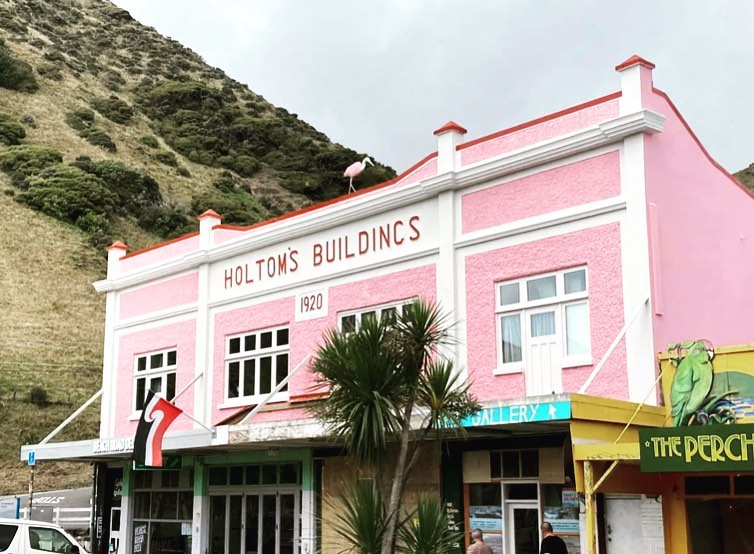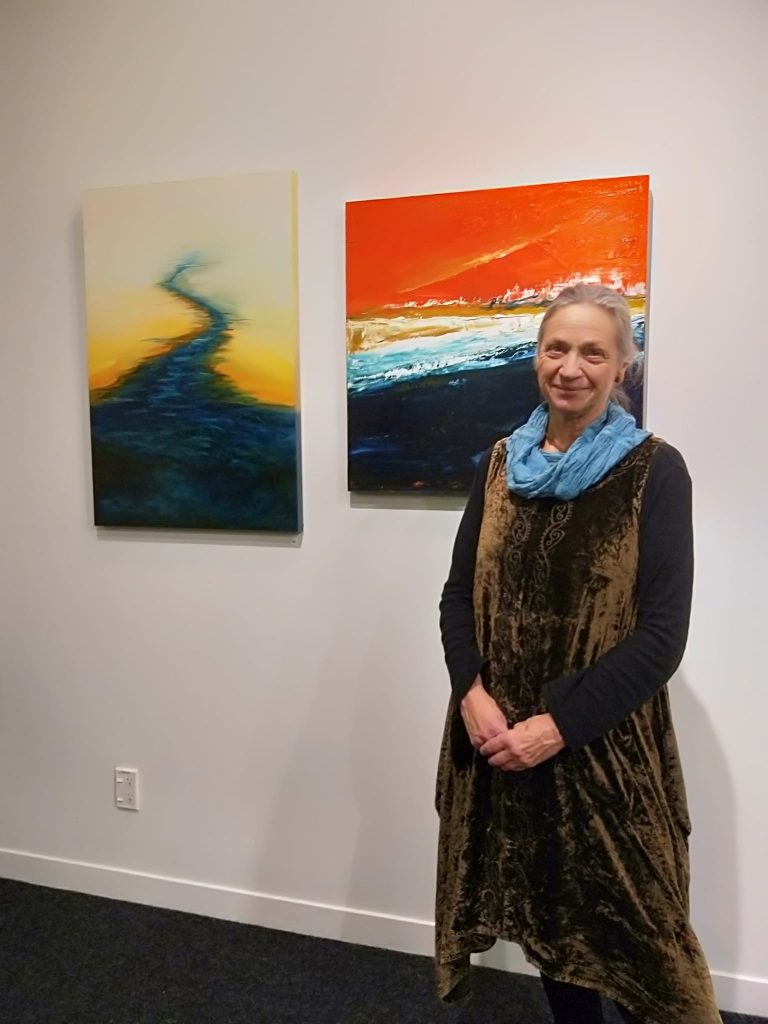Beside the warmth of the fire upstairs in the 1920’s Holtom’s building in Paekākāriki, we sat down with Dianna Fary to learn more about her career as an artist. It was an inspirational chat, traversing the thrills and challenges of her creative journey and she arrived at a place rarely encountered in conversation with artists – a place of satisfaction.

Tell us how you got into your creative practice. How did it all begin?
I did a trade in furniture finishing in 1984. I was the first of only 2 woman in New Zealand to do this trade at the time. I did an adult apprenticeship in Taranaki. I probably should have gone to art school instead but I followed the family business of cabinet making/joinery. My father brought my brother’s and myself up teaching his trade skills to us in his factory, which involved learning how to work the spray guns as well, which I took a particular shine too. I had travelled overseas after my school years and when I came back, I decided to take an apprenticeship down the road from Dad at another cabinetry shop as Dad as he was entering semi-retirement. It was full of blokes and they struggled with a girl being there, however, after me, it became easier for other women to enter the industry.
What exactly is furniture finishing?
It is a trade that teaches you all about wood, how to treat it, look after it. Skills such as how to French polish a piano, how to paint grain on timbers and match different pieces of wood. Learning about different paints and dyes. I loved working the spray guns and mixing paint. Essentially, I learnt a lot of skills in problem solving, how to fix marks on furniture already installed. Touchups where the grain didn’t match, knots in the wood In the commercial sector, a lot of on- site repairs.
What was the industry like to work in back then?
It was unhealthy with lots of chemicals and health and safety issues . The better factories had spray booths where large industrial fans were fitted behind waterfalls drawing the atomized paint to the water catchment trough below. I worked with a full oxygenated body suit during my first pregnancy. The paint used in this Industry is highly toxic so safety measures were Paramount.
Tell us about your apprenticeship and what it involved.
I did a 3 and half year Adult apprenticeship. This included 3×2 week practums courses in Christchurch Polytechnic. I was the only woman in a class of 20 young boys. That was awkward!. I became a fully qualified Furniture Finisher. One of only two women to be the first in New Zealand. We learnt about spraying shelving, desks, kitchen and bathroom cabinets and other commercial furniture. We learnt about different spraying techniques and the equipment that was needed.
After my apprenticeship, I moved to Wellington where I was employed in a commercial furniture company for two years. After the birth of my first child, I started working off-site, visiting commercial sites and doing furniture restoration. I recall having to once cart a compressor up four flights of stairs in Wellington! Alongside my work, I also did a lot of restoration on my own home. It was a 1920’s villa with beautiful native woods and architecture.

How did you evolve to a career in painting artworks?
When I was 40 years old and my children were aged 2, 4 and 6, I started painting at my kitchen table and doing life drawing. While they were little, I worked part-time at Resene for four years and really enjoyed the interior design aspect and all the conversations I had with customers about colour matches for their homes. I used the paint application knowledge I had acquired in my trade and further developed my product knowledge.
I kept painting and undertook a year of study at whitirea Polytech in Porirua studying fine arts and design. I felt right at home among fellow artists and decided I loved the arts. However, it became urgent to just paint so I didn’t stay.
It was a bit of a juggle with family life and painting on the dining table when children were at school. A new phase started when I met Alan Wehipeihana during this time, who helped motivate me to take my art journey more seriously. When Alan took a garage space under the Holtom Building in Paekākāriki I joined him to learn more art skills.
Two years later, a street front shop came up for rent across the road. I grabbed the chance to set up a retail outlet to sell my own and other artist’s works. The Gallery/ Studio started as a collective called ‘Box of Birds’ and then a year later when I took sole charge, was renamed ‘Innominata.’ I was there for four years from 2005 – 2008. During the time I had the retail outlet I met a lot of fantastic artists in the region but then the global financial crisis hit so I shut shop and joined Alan across the road in the Holtom’s Building upstairs now, where the landlord, John Finn was hiring out artist Studio spaces.

When did you begin to reside at the Holtom’s building?
From 2009, when I joined Alan upstairs, other artists looking for space joined us too. Five of the current 12 artists in this building have been here over 5 years. Of course, old buildings in a state of disrepair come with cheaper rent and that helped to develop a thriving artist hub over the last 15 years. In recent years, property developers approached our landlord. The Cameron brothers stood out, as they loved the character of the building and wished to restore it and maintain our artist collective. So the building changed hands.
What are your hopes for the future?
I feel like I am at a new beginning with a beautiful restored building and surrounded by a vibrant new energy. There is a maturity and confidence to my painting – more grounded and whole. I think the work reflects that and I still love what I do. It is wonderful being able to bounce ideas and support each other. We are all independent but if anyone needs help with anything we can help each other.
Tell us about your work in the exhibition.
I am fascinated by texture and colour. Texture comes from my furniture trade background. I like playing with paint and exploring how it works. Recently, one of the artists who works with natural materials to create pigments, showed me a beautiful colour (indigo). We mixed the pigment into a medium and I used it to do a painting. This was really exciting and the painting sold soon after. This is one if the journeys that painting a picture takes me. There are many many more.
VIEW AND BUY
Holtom’s Artist’s Studio Group Exhibtion @Creative Manaaki Gallery, Kiwibank Paraparaumu. Open Monday – Friday 10am – 2pm until 28 June.
Holtom’s Art Studios, Beach Road, Paekākāriki. Open Friday – Sunday, 10am – 4pm.

